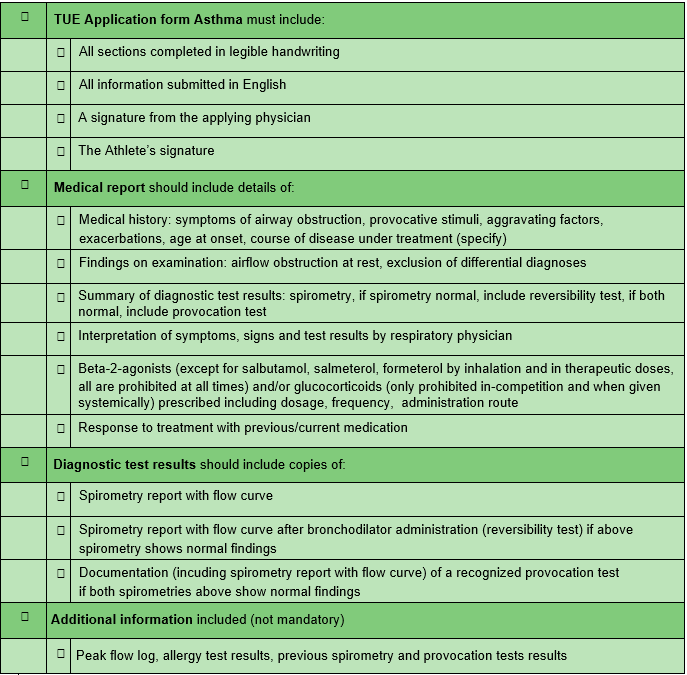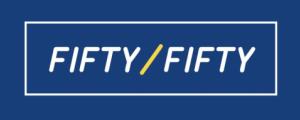There are both permitted and prohibited asthma medications. Therefore, a request for a Therapeutic Use Exemption (TUE) for asthma should include a complete medical file with a clear explanation of why an alternative medication not on the prohibited list would be unsatisfactory and therefore not prescribed.
Permitted Asthma medication
Salbutamol, salmeterol and formoterol are permitted in competition and out of competition in dosages considered to be appropriate for the treatment of asthma.
Regarding salbutamol, the daily dosing time intervals are modified to 600 micrograms over eight hours starting from the time any dose is taken (previously 800 micrograms over 12 hours). This is to reduce the risk of any potential Adverse Analytical Finding’ (AAF): arising after high doses are taken at once. The total permitted daily dose remains at 1,600 micrograms over 24 hours. A TUE should be sought for doses in excess of these limits.
Inhaled Asthma medications that include salbutamol are: Airomir, Atrodual, Buventol, Ipramol, Salipra, Ventilastin and Ventoline. Inhaled Asthma medications that include salmeterol are: Seretide and Serevent. Asthma medications that include formoterol are for example: Foradil, Formoterol, Innovair, Oxis and Symbicort.
Inhaled glucocorticosteroids are permitted, do not require a Therapeutic Use Exemption (TUE)
Asthma medication requiring a TUE
Some Beta-2 agonists e.g. terbutaline is prohibited and require a Therapeutic Use Exemption (TUE). The request for a TUE should include a complete medical file with a clear explanation of why an alternative medication not on the prohibited list would be unsatisfactory and therefore not prescribed. Download the IFF TUE application form from here.
Summary of requirements for the medical file in case of asthma (attach to TUE application):
- A complete medical history
- A comprehensive report of the clinical examinations with specific focus on the respiratory system
- A report of spirometry with the measure of the Forced Expiratory Volume in 1 second (FEV1)
- If airway obstruction is present, the spirometry will be repeated after inhalation of a short acting Beta-2 agonist to demonstrate the reversibility of bronchoconstriction
- In the absence of reversible airway obstruction, a bronchial provocation test is required to establish the presence of airway-hyper responsiveness
Examples of Beta-2 agonists including terbutaline: Bricanyl and Terbasmin.
THERAPEUTIC USE EXEMPTION (TUE) CHECKLISTS:





